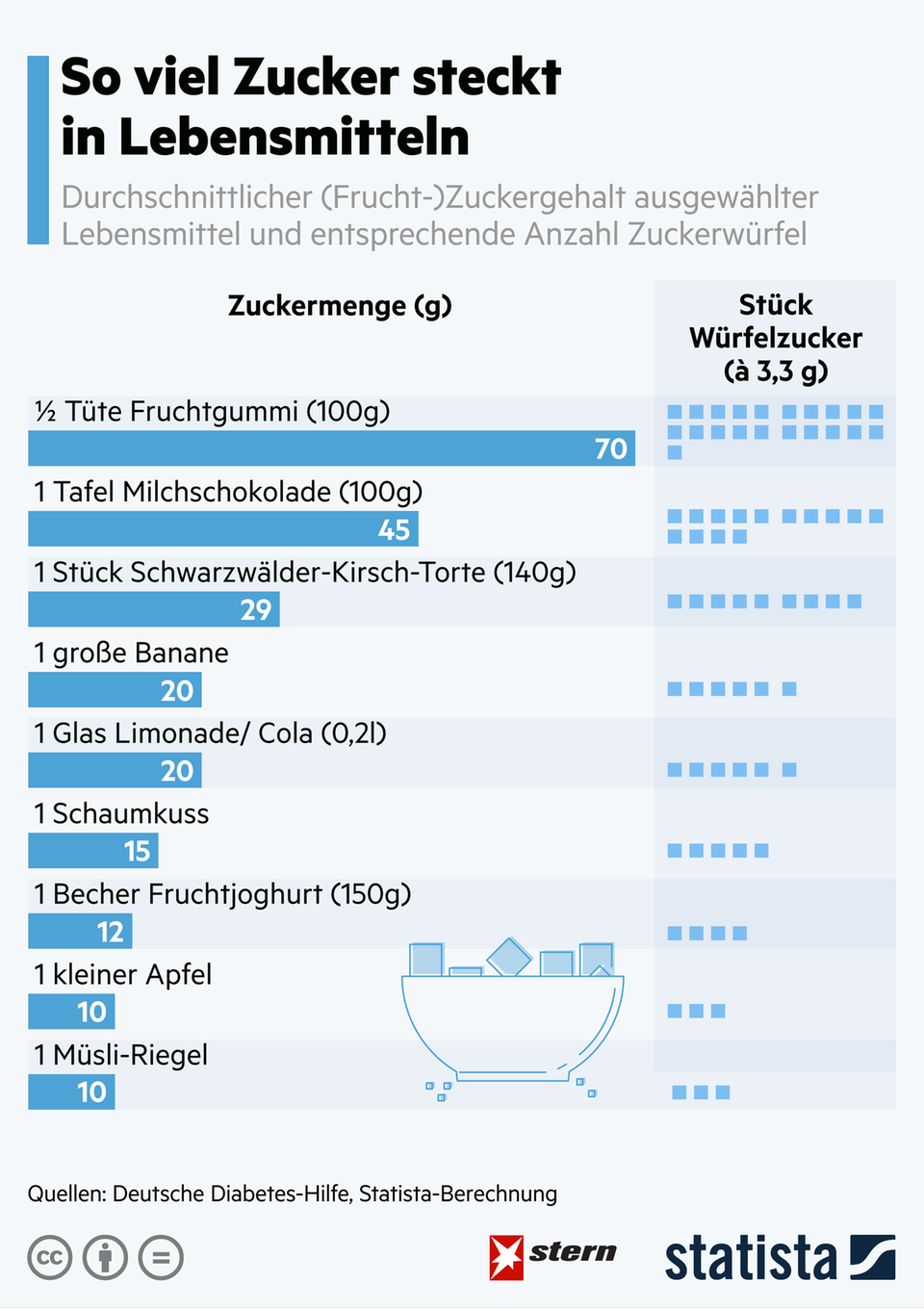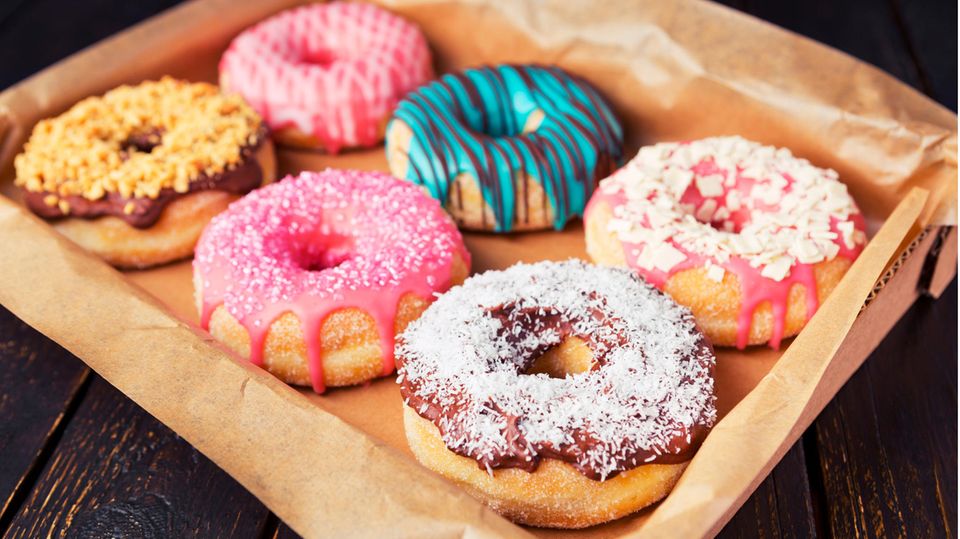Healthy Diet
So much sugar in food

The delicious black forest cherry cake is one of the sugar bombs
© Andrea Warnecke / Picture Alliance
Sugar is an integral part of our diet. However, excessive consumption can pose a risk to our health. Our graphic shows how much sugar is really in some foods.
In a 2015 directive, the World Health Organization (WHO) recommends a daily intake of no more than 25 grams of table sugar – the equivalent of around eight cubes of sugar. Many foods come very close to this amount or even exceed it significantly. This is shown in the Statista chart based on data from the German Diabetes Aid. For example, the consumption of a piece of Black Forest cherry cake is enough to barely exceed the recommended daily intake.
The same applies mathematically to two foam kisses or three apples. Fruit gums or milk chocolate should only be enjoyed in small quantities, as they contain particularly much sugar. Fruit should not be dispensed with, however, because in general, fresh and natural foods are preferable to industrially produced ones: they contain valuable components such as fiber, secondary plant substances, vitamins and minerals.

In Germany, the per capita consumption of sugar in 2017/18 was around 34.6 kilograms-this corresponds to a daily amount of around 95 grams. As an additive in many foods or beverages, sugar is used as a popular flavor enhancer in the food industry. Many consumers therefore cover a large part of their sugar needs “unconsciously”. Obesity and diabetes are common health risks associated with excessive sugar consumption. However, an increase in sugar consumption can also be observed in other countries.



